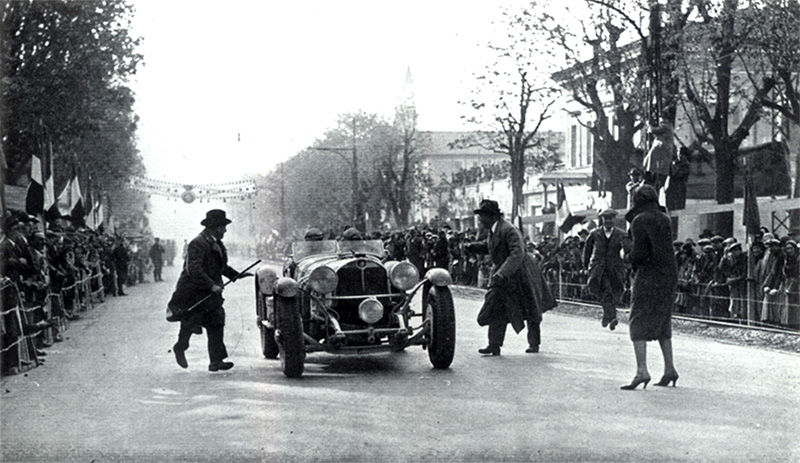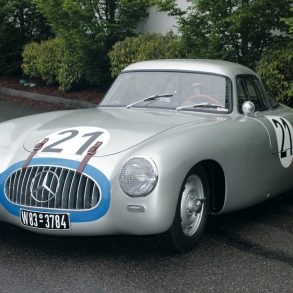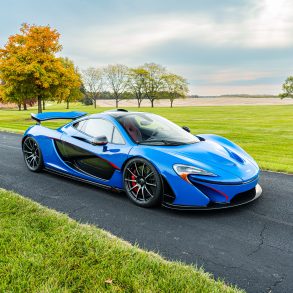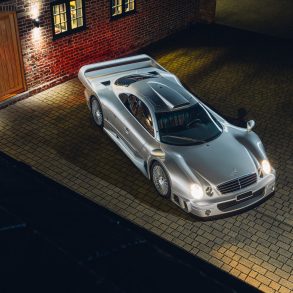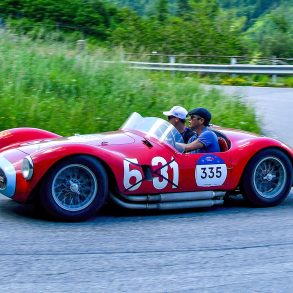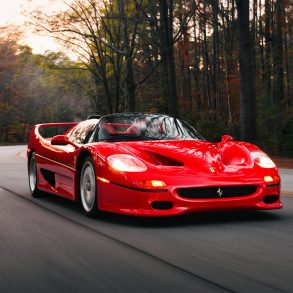The 1931 Mille Miglia Race
Results: 1931 Mille Miglia Results / Dates: April 11-12, 1931 / Winner: Caracciola – Sebastian / Winning Speed: 63.21 mph / Starters: 99 / Finishers: 59
The effects of the Wall Street crash and subsequent depression worked its way across the ocean and on November of 1930 Daimler-Benz ceased all major racing activities. Alfred Neubauer desperate to maintain his relationship with the new German Ace, Rudolf Caracciola and sensing that the German company’s withdrawal was only temporary approached Dr William Kissel, managing director at Daimler-Benz with the idea of a personal services contract with the young driver whereupon the manufacturer would provide the equipment and support in exchange for a portion of all prize monies collected. This “support” included a generous stipend as well as use of a company car. With this Neubauer put together a small racing team which included Caracciola, his wife Charley, mechanic Willy Zimmer and co-driver Wilhelm Sebastian. It was said that Sebastian would later convince Caracciola to take the inside ditch of the Karussell at the Nurburgring.
The one fly in the ointment was that according to the Italians, Caracciola was contracted to the Alfa Romeo team! After bringing this matter to the attention of the Automobile Club of German the Milanese company graciously allowed Caracciola to contest the race driving a Mercedes which is just as well due to the fact that the manufacturer, also effected by the growing economic strife only had two frontline race cars which were to be given to Nuvolari and Arcangeli.
For 1931 the course underwent a few revisions in order to maximize revenues by incorporating Porto Recanati, a popular Adriatic resort. This year’s starting field was down in comparison to last years with Varzi now driving for Bugatti. Filing an entry at the last possible moment there was some question with regards to whether he would use a Bugatti T50 or the T51 which was introduced at the Paris Motor Show in October of the previous year. Finally deciding to go with the larger engined T50 whose engine it was said had be heavily “influenced” by the American Miller that the Molsheim firm had recently purchased. Alfa Romeo countered with their now legendary Tipo 8C 2300 supported by an army of lesser models including the team entered by Scuderia Ferrari. All told nearly a third of the 99 starters were driving Alfa Romeos! Britain was represented for the first time by a supercharged Austin Seven driven by Charles Goodacre. Caracciola was driving a specially lightened SSKL. For the Mille Miglia Neubauer added Karlo Kimpf and Fritz Kuhnle to their “team”.
Soon after we had moved into our hotel, the Albergo Brescia, we had our first conference …With a map of Italy spread out in front of me I felt like Napoleon before the battle of Waterloo, till I thought of Alfa Romeo’s ninety mechanics and seventeen repair trucks and went hot and cold all over.
The thousand-mile race course ran from Brescia via Bologna and Florence to Rome, then over the Abruzzi mountains to Ancona on the Adriatic, from there to Bologna again and through Ferrara and Treviso back to Brescia. Sixteen hours of driving over good, bad and indifferent roads, some asphalt, some cobbled through towns, villages and mountain passes.
We would need four refueling depots, but we had only three men. Karlo Kumpf, I decided, would have to do the work of two, As soon as Caracciola had refueled and changed tires at the first depot at Sienna, Kumpf would make for Bologna ready for the second half of the course. From Sienna to Bologna was about 120 miles. The roads would be partially blocked. But he had between six and eight hours.
– Alfred Neubauer in Männer, Frauen und Moteren

One the run to Bologna Caracciola opened up a lead over the second place OM of Morandi/Rosa. In so doing he averaged 96 mph easily smashing the record set by Arcangeli. After initial tire troubles Nuvolari was able to claw back to second place no more than 5 minutes behind the leader. By the time they reached Rome Nuvolari now led Caracciola by two minutes with Campari third and Borzacchini fourth in another Alfa Romeo. Arcangeli was fifth even though he had to change tires 9 times already!
As night fell the lead changed amongst several drivers and as they headed up the Adriatic Coast Campari assumed the lead. As the race progressed through the night the Alfa Romeos seamed to be in control but as dawn broke Caracciola appeared to get a second wind. Not feeling comfortable hurtling through the darkened Italian landscape the day’s light rejuvenated Caracciola while several other drivers crashed out. Nuvolari was able to continue though a bloody mouth was suffered when he hit the windshield of his car. That and 18 tire changes caused even the great Nuvolari to long for the finish line, one that Caracciola duly crossed followed by Campari and Morandi in OM’s swan song. It was said that the fact that a foreign driver driving a foreign car saved the Mille Miglia from being just a local event or even being canceled. In fact only other foreign driver to win the event, Stirling Moss would do so twenty-four years later.


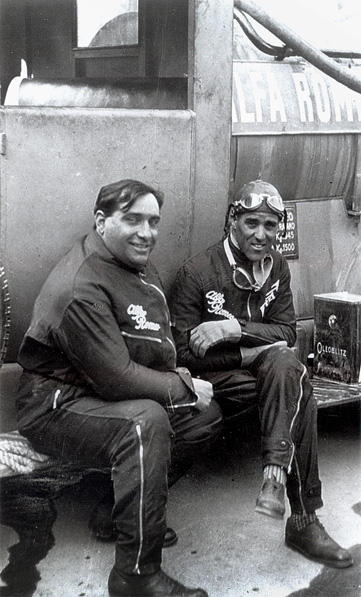


1931 Mille Miglia Route
1931 Mille Miglia Results

- Results: 1931 Mille Miglia Results
- Dates: April 11-12, 1931
- Winner: Caracciola – Sebastian
- Winning Speed: 63.21 mph
- Starters: 99
- Finishers: 59
| Result | Driver | Team | Time |
| 1 | Caracciola – Sebastian | Mercedes | 16h 10m 10s |
| 2 | Campari – Marinoni | Alfa Romeo | 16h 21m 17s |
| 3 | Morandi – Rosa | OM | 16h 28m 35s |
| 4 | Klinger – Saccomanni | Alfa Romeo | 17h 07m 57s |
| 5 | Gerardi – Gerardi | Alfa Romeo | 17h 08m 06s |
| 6 | Scarfiotti – Bucci | Alfa Romeo | 17h 27m 36s |


